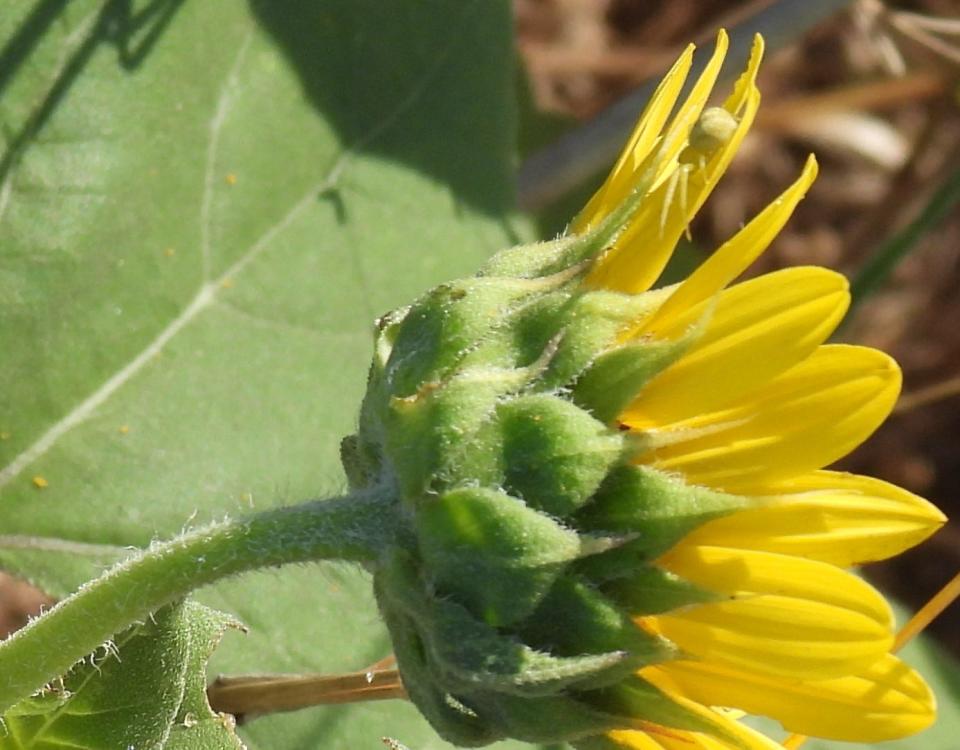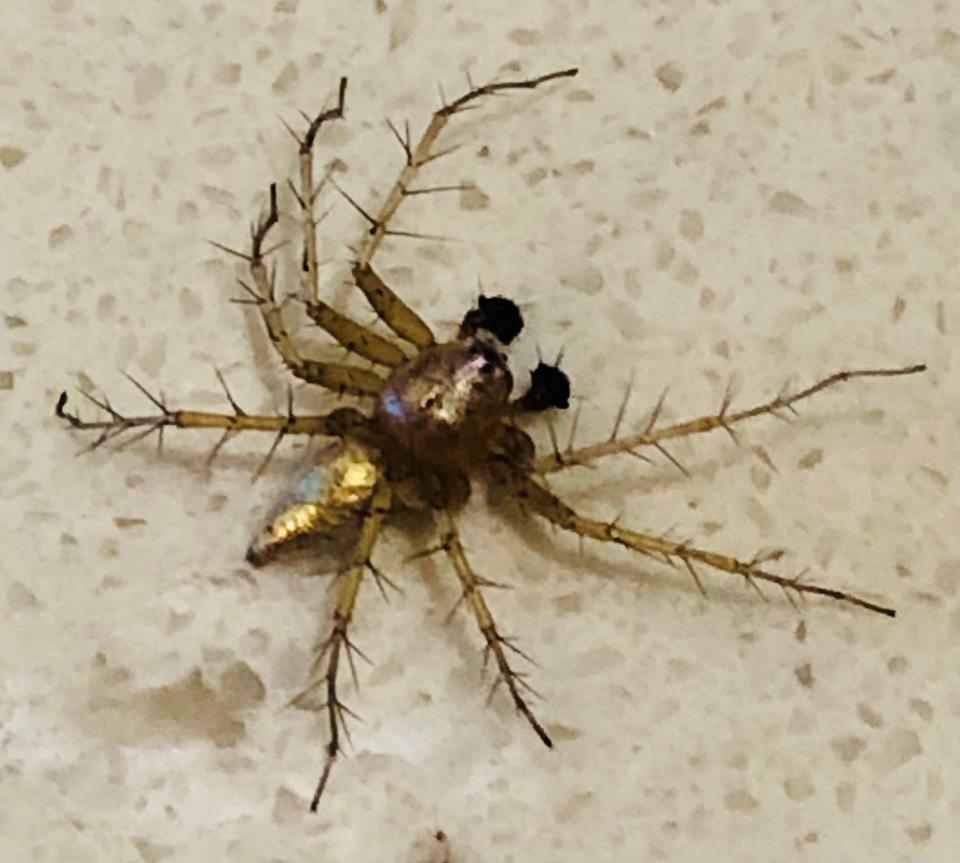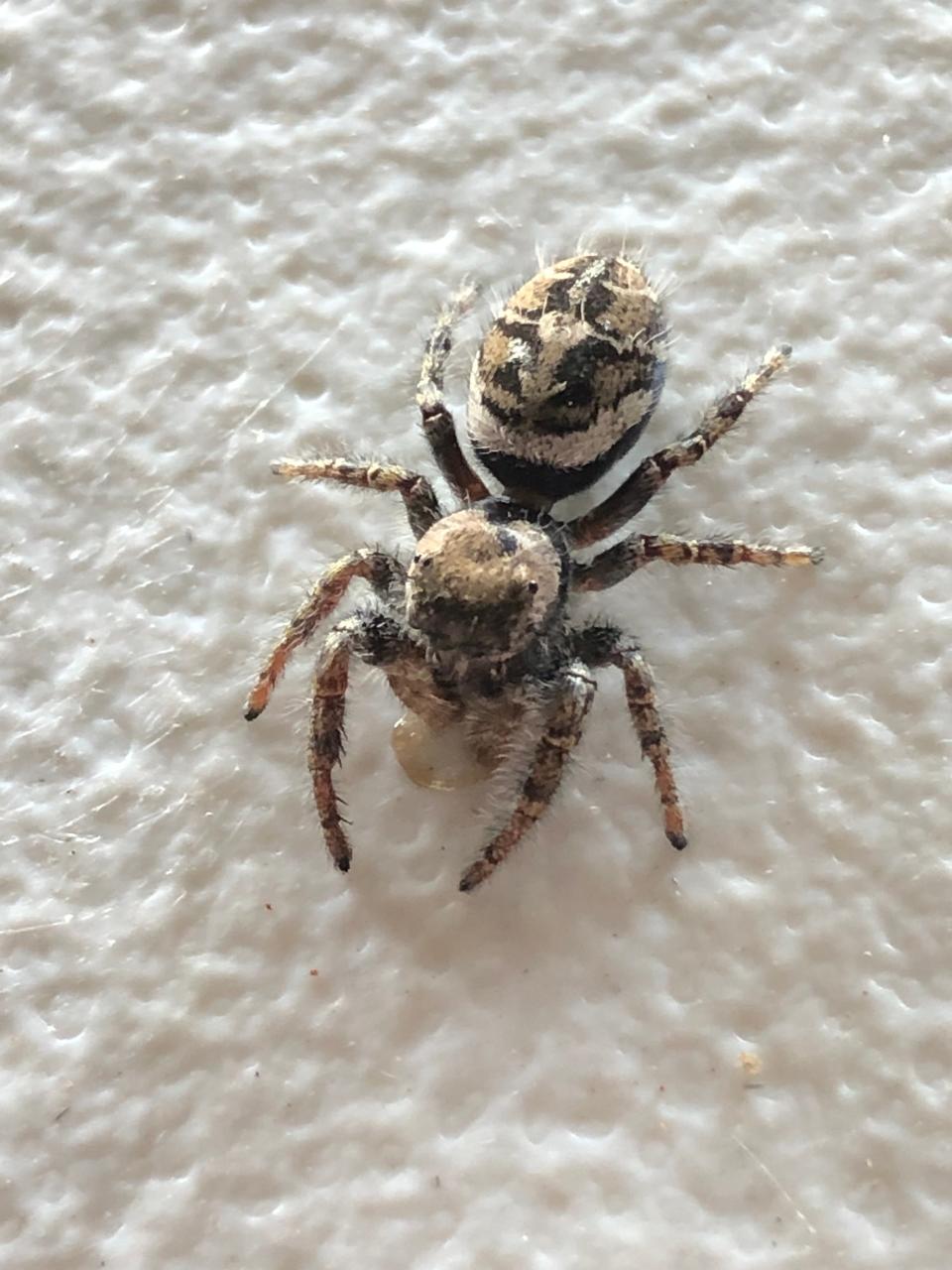Ambush artists: Tiny arachnids rewrite rules with web-free attacks
Spiders are referred to as "colonizers" in ecological terms and are often the first animal species to inhabit newly formed oceanic islands and other areas which have been disturbed by floods, fires, and other natural disturbances. Therefore, it shouldn’t surprise us when we encounter a spider during the course of our day (or night). Spiders are versatile predators of insects and other arthropods and possess many adaptations which facilitate their particular styles of hunting and habitat preferences. Let’s discuss a few of the more common types of spiders encountered in our area and their methods of prey capture and preferred habitats.

Crab spiders nab prey with 'catch of the day' approach
If you cultivate and/or have sunflowers, daisies, or other showy, disk-shaped flowers in your garden or flower beds or have a patch of these flowers growing wild, you have an excellent habitat to begin searching for spiders belonging to a group known as Crab Spiders (family Thomisidae). A Crab Spider’s colors allow it to blend in with the flowers and vegetation upon which it rests and patiently waits for a prey item to come within striking (or ‘grabbing’) distance! Body colors range from yellows, greens, browns, to reds and some Crab Spiders have the ability to change body colors to match their surroundings. Body shape tends to be somewhat flattened and the anterior and posterior eye rows are arranged in two slightly opposing curves with the anterior lateral pair being slightly larger than the remaining six eyes. This group of spiders takes its common name from the distinctive shape, size, and arrangement of the legs and, if you’ve ever looked closely at a Crab Spider, you know why! The two front pairs of legs are much longer and more robust than the four legs. The legs project outward in a perpendicular direction in relation to their general body plane and are termed ‘laterigrade.' This is especially evident with the anterior pair; which resemble the enlarged, ‘pinching’ legs/claws of crabs! Crab Spiders don’t have large claws; however, they use stoat spines on their foremost legs to help them capture and hold onto prey items that venture within the radius of their extended grasp! Crab Spiders are wandering hunters and do not construct webs for prey capture or retreats. However, a female Crab Spider will place her eggs in a silken egg sac and usually remain nearby until the eggs hatch or she dies. The lifespan of most Crab Spiders is approximately one year.

Lynx spiders full of purr-sonality
Lynx Spiders (family ‘Oxyopidae’ = referring to ‘sharp or acute vision’) are common in our area but are easily overlooked due to their excellent, cryptic (= ‘hidden’ or ‘camouflaged’) coloration and generally small sizes. Similar to their namesake cat, the Lynx Spiders are agile jumpers and rapid runners. They forgo the use of webs and actively pursue their prey in grassy vegetation and on, over, and through brushy and weedy habitats. Lynx Spiders have a distinctive, hexagonal-shaped eye arrangement with enlarged, posterior median eyes. Body colors vary and range from blacks and grays to yellows and greens. The colors of some species are reflective and iridescent; giving them a striking, metallic appearance! The abdomen is long and narrows toward the posterior and the legs have numerous, long, conspicuous spines. The outwardly-projecting leg spines help the Lynx Spider to capture and hold prey items. The spider can fold its legs around an insect and the spines form an enclosing basket around the prey and also likely help protect the spider from thrashing, violent movements until the prey is adequately subdued! Similar to the aforementioned Crab Spiders, some Lynx Spiders change their colors to match surrounding vegetation. Insect prey items include many species of moths and caterpillars which harm crops and Lynx Spiders are considered beneficial in many agricultural settings. For example, Lynx spiders are known to prey upon the Bollworm Moth, Leafworm Moth, and Cabbage Looper Moth. Lynx Spiders are commonly found in area alfalfa, cotton, sorghum, and wheat crops. Lynx Spiders have an annual lifecycle. Females mate a single time and lay eggs (depending upon the species) in spring, summer, or fall. Young hatch in a few weeks and overwinter in the soil and/or ground vegetation. Young Lynx Spiders have been observed feeding upon plant nectar; perhaps to help reduce and hide their scent from other predators!

Jumping spider takes leap of faith for its lunch
Last, but certainly not least, let’s talk about a group of spiders that many consider the ‘cutest’ of the entire order! These are the exquisitely adapted, fuzzy-appearing Jumping Spiders! Jumping Spiders belong to the largest family of spiders (over 5,000 described species) known as the Salticidae. The family name is derived from the Latin word ‘saltare’ meaning ‘to jump, leap, or dance’. These small to medium sized spiders perform all three types of movements with ease and expert precision! Along with their distinctive, fuzzy, often multicolored, iridescent, and variously patterned appearance, Jumping Spiders have the largest pair of eyes, within the spider groups, in relation to their overall body size. Their large, anterior median eyes are often described as resembling a set of large automobile headlights and these eyes provide the Jumping Spiders with excellent long distance vision. In order to accommodate their large eyes, the anterior end of the cephalothorax is distinctively square-shaped. Jumping Spiders can be found in all types of outdoor habitats and will even invade our homes and buildings in search of their usual insect meals. Probably the most commonly encountered Jumping Spider in our area is the black-and-white colored, aptly named, Bold Jumping Spider (Phidippus audax). Their overall body color is jet black with white spots and bands on the abdomen. The chelicera are metallic green. Young P. audax spiders may have yellow or orange spots on their abdomen. These Bold Jumping Spiders are frequent visitors inside our homes and they often appear to be as curious about our activities as we are about theirs!
In fact, many behavioral studies have been conducted on Jumping Spiders and it has been discovered that they are surprisingly intelligent and capable of learning and problem solving in order to adjust to their environments! Complex displays, courting behaviors, and even communication using stridulatory organs have been observed in many species. Mimicking the appearance and behaviors of various insects (especially ants) is also common in some groups of Jumping Spiders. Mimicking behaviors aid the spiders in obtaining food and also may provide some protection from other predators. The hunting style of most Jumping Spiders is similar to a cat; wherein, the spider locates its prey by sight, sneaks up close, and pounces upon its future meal! Although they don’t construct web snares, Jumping spiders utilize their silk for egg sacs, burrow and retreat linings, and as draglines. Jumping spiders often live longer than a single year and will construct specialized houses called ‘hibernacula’ from silk in order to survive the winter season in our area. Hibernacula are often constructed underneath the bark of trees, under rocks, and in other suitable locations. Jumping Spiders mate in spring and summer and may produce more than one egg sac each year.
On your next excursion out to the garden or field (or even in your home, shop, or workplace) don’t be too surprised if you encounter one or more of these stealthy and bold hunters! If your time permits, it is worthwhile to simply watch as these fascinating spiders go about their daily business!
Jim Goetze is a retired professor of biology and former chairperson of the Natural Sciences Department of Laredo College with an avid interest in all aspects of the natural world. He can be contacted at gonorthtxnature@gmail.com

This article originally appeared on Wichita Falls Times Record News: Ambush artists: Tiny arachnids rewrite rules with web-free attacks

